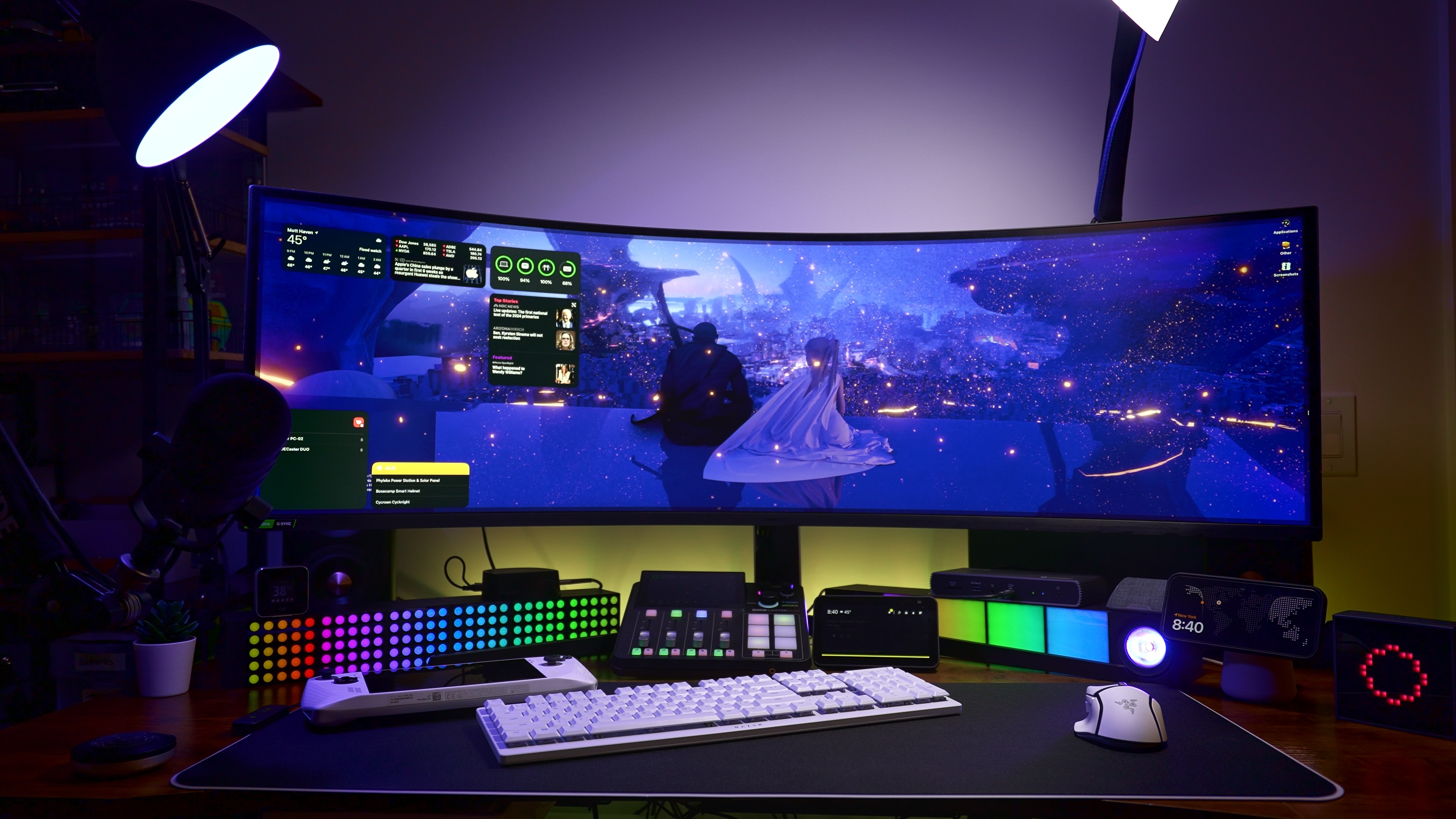
If you're like me and only have a small space to work with, you have to make some smart choices when creating a multi-functional desk setup so it doesn't feel cramped or messy.
Whether you’re looking for some inspiration or you’re interested in upgrading your own setup, you can find all of the items I used for my ultimate desk space in our full YouTube video.
The center of my desk setup is the desk itself. I have the Heonam Electric Standing Desk, which measures 55 x 30 inches and is one of the largest motorized options you can buy for under $200. This desk comfortably holds my 49-inch ultrawide monitor and everything else.
For my monitor, I have the massive Samsung 49-inch Odyssey G9. If I had to pick the single most important part of my setup, I’d have to say it's this monitor. This is a multi-tasking beast. With its support for 240Hz with NVIDIA G-SYNC and FreeSync, this is an excellent choice for gaming too.
Since it's effectively two 27-inch monitors side by side, I get two full windows open at the same time, research on the right and my script on the left, my Mac on one side and a second input on the other, or just a massive video editing timeline spanning across the entire screen. If you manage to find an open box deal on this for under $900 like I did, it's an absolute steal.
My MacBook Pro 14” M1 Max is connected to my monitor via the Plugable TBT4-UDX1 dock, which can drive two 4K 60Hz monitors or a single 8K 3Hz. It has the perfect amount of ports for all of my devices and an SD card reader on the front.
My peripherals also play a big role my setup's aesthetic. I have what I consider the trifecta from Razer. The Deathstalker V2 Pro is beautiful low-profile mechanical keyboard while the Basilisk V3 Pro is one of the most ergonomic mice I've tested.
I recently added the the Strider Chroma mousepad which is extremely overkill— but just as with everything else at Razer, the more compatible products you sync together, the more immersive your experience becomes. The other great thing about going with Razer is that it also offers vast support for third-party hardware like my Yeelight Cubes, which take the experience to another level.
Aside from my monitor, my audio interface is probably is the second most important part of my setup. At its core I’m using the Rodecaster Duo. The Duo supports big XLR mics like the Rode PodMic, but also USB-C inputs, and now even wireless connectivity with the Wireless GO IIs or Pros. So no matter what kind of mic I’m using, with a click of a button, I can start recording high quality audio effortlessly.
Having a single desk where I can enjoyably work and play without compromise has made such a difference. To learn more about my other top picks and how I put this setup together and a longer list of the products I used, be sure check out the full video on YouTube.







